Abstract
The effects of externally applied chloramine-T on the excitability of single toad myelinated nerve fibres were studied. Chloramine-T is a mild oxidant which reacts specifically with the cysteine and methionine residues of proteins. Chloramine-T prolongs the action potential of a single myelinated fibre by more than 1000-fold. This effect is concentration- and time-dependent; higher concentrations and longer incubation times increase prolongation. Under voltage-clamp conditions, sodium channel inactivation is markedly inhibited by chloramine-T while sodium channel activation remains normal. Prolonged depolarization of the membrane leads to a maintained sodium current. The maintained sodium currents show activation kinetics, dependence on membrane potential, and reversal potentials which are similar to those of normal, inactivating sodium currents in untreated fibres. Both the maintained and the peak sodium currents are equally inhibited by tetrodotoxin. After partial removal of sodium inactivation by brief exposures to chloramine-T, the voltage dependence of the steady-state sodium current inactivation (h infinity) is shifted in the depolarized direction by about 20 mV, even after correction for the non-inactivating component contributed by the maintained current. The phenomena described here imply that cysteine or methionine residues are critical for the sodium channel inactivation processes. The two different modifications of inactivation, its removal shown by the maintained current, and the shift in the voltage-dependence of the remaining inactivatable channels, reveal that at least two separate residues are modified by chloramine-T.
Full text
PDF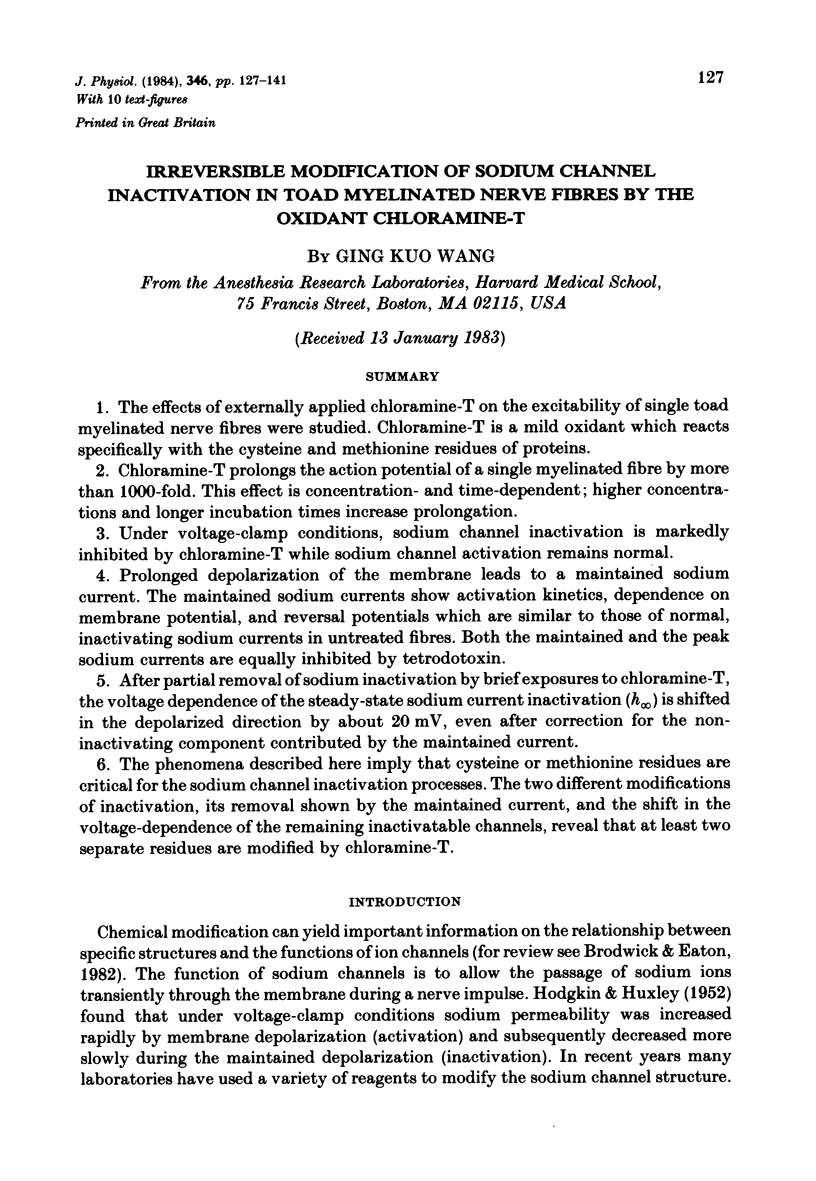
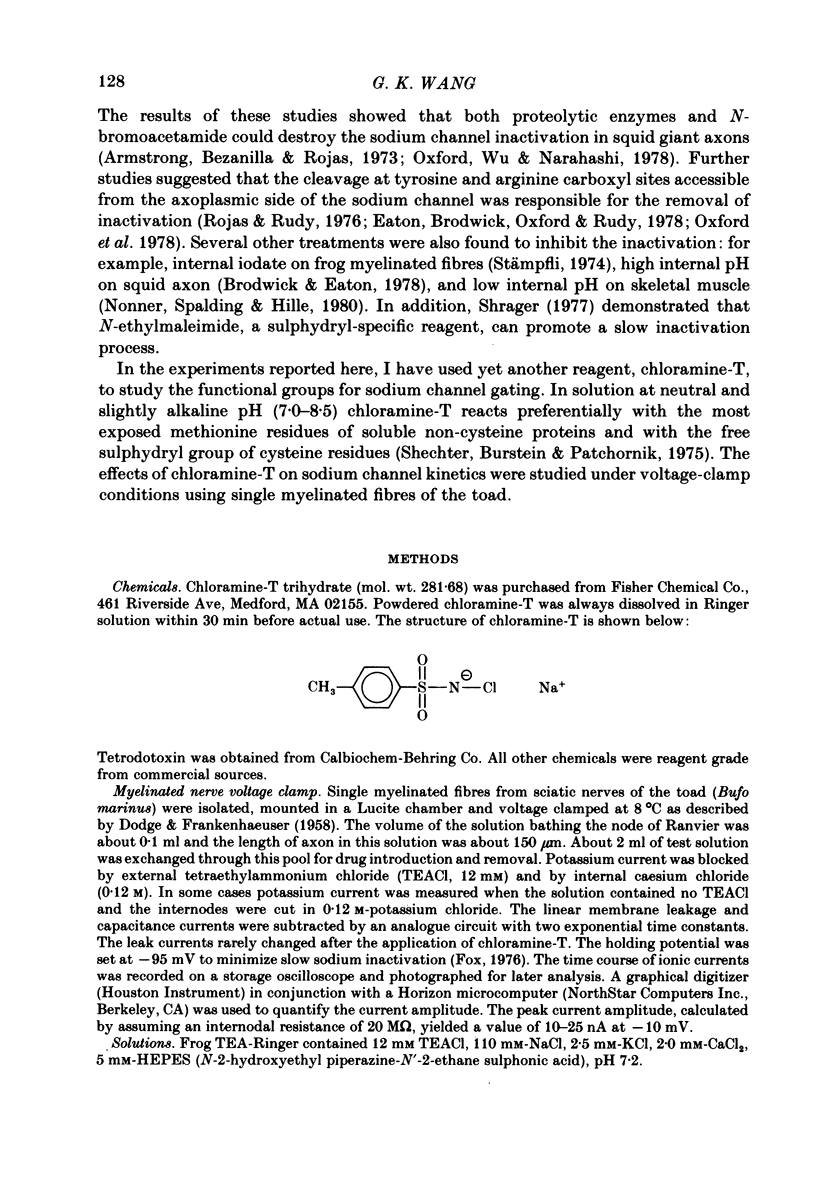
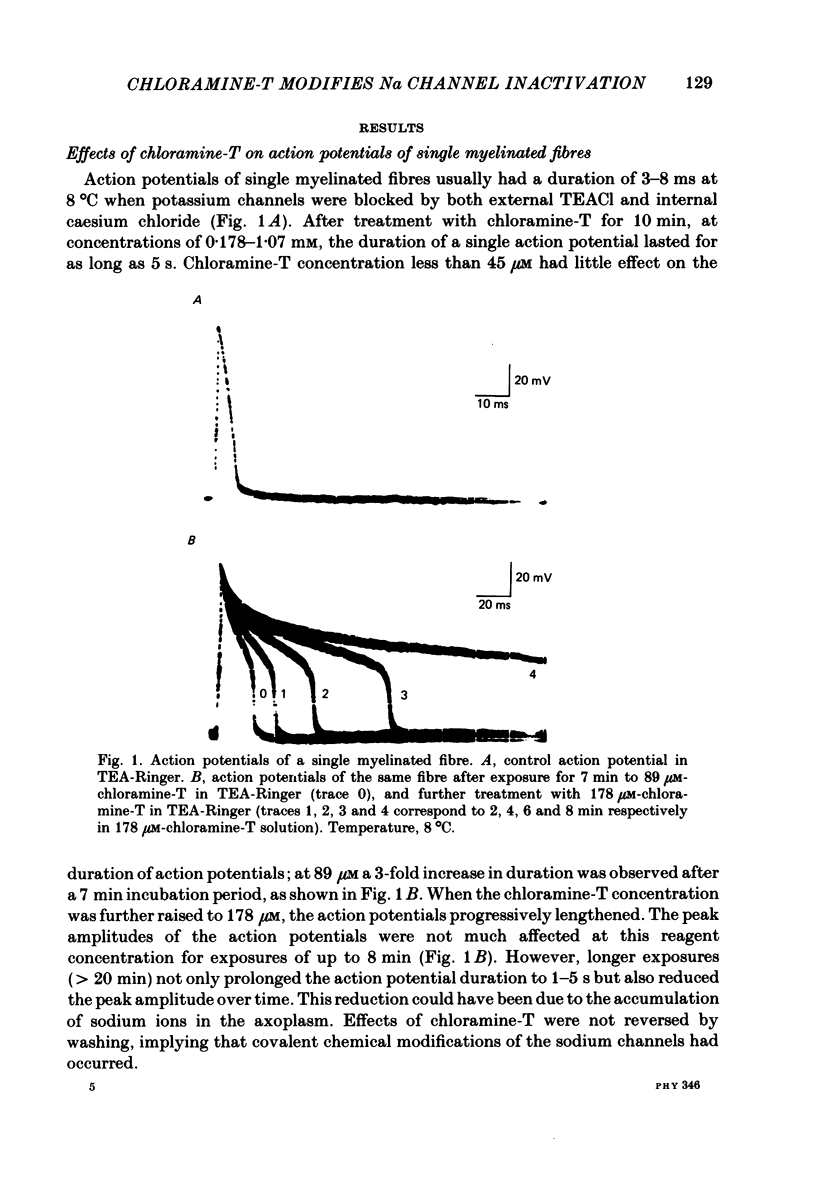
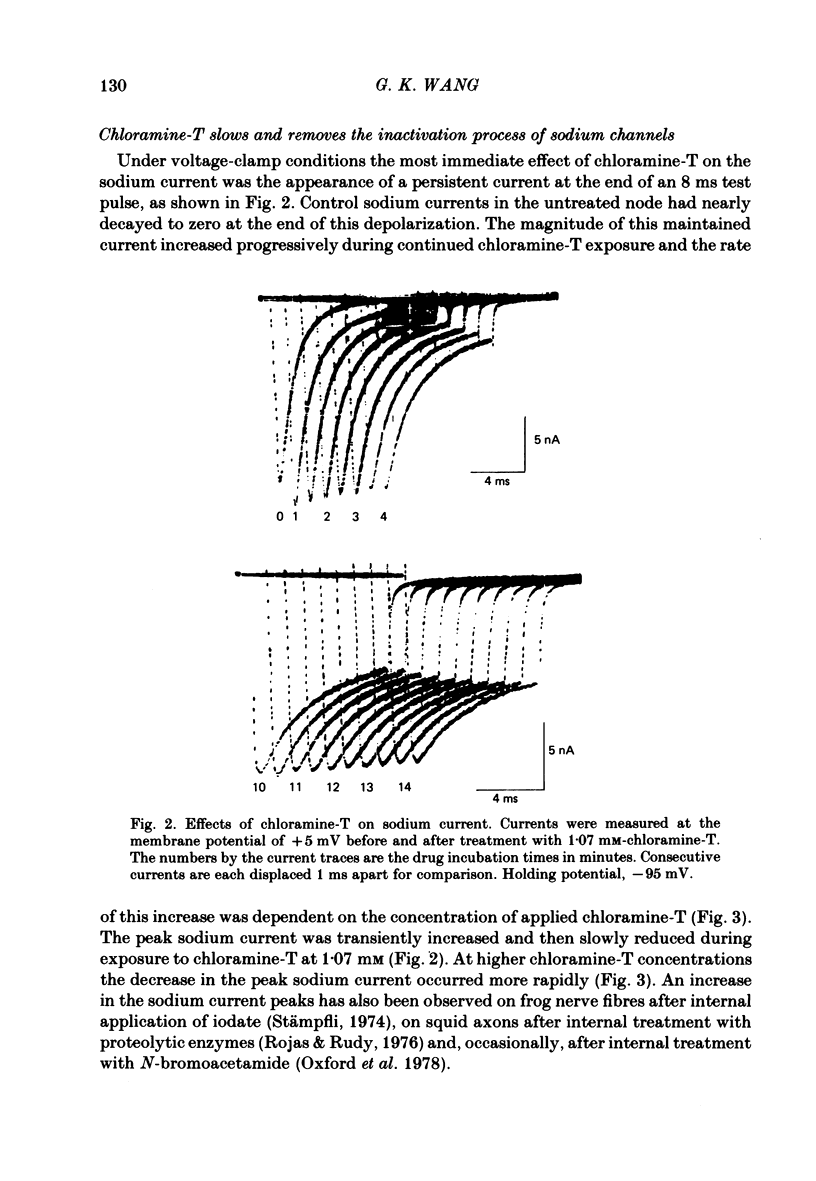
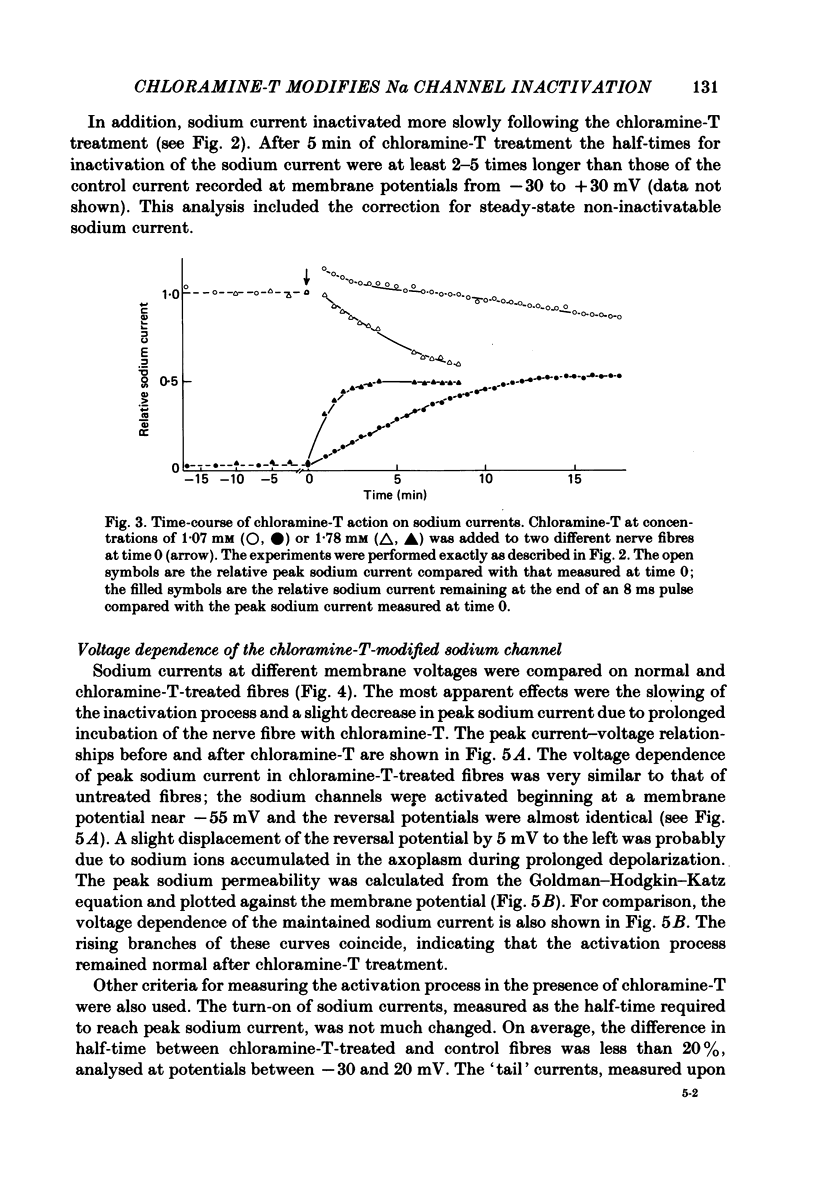
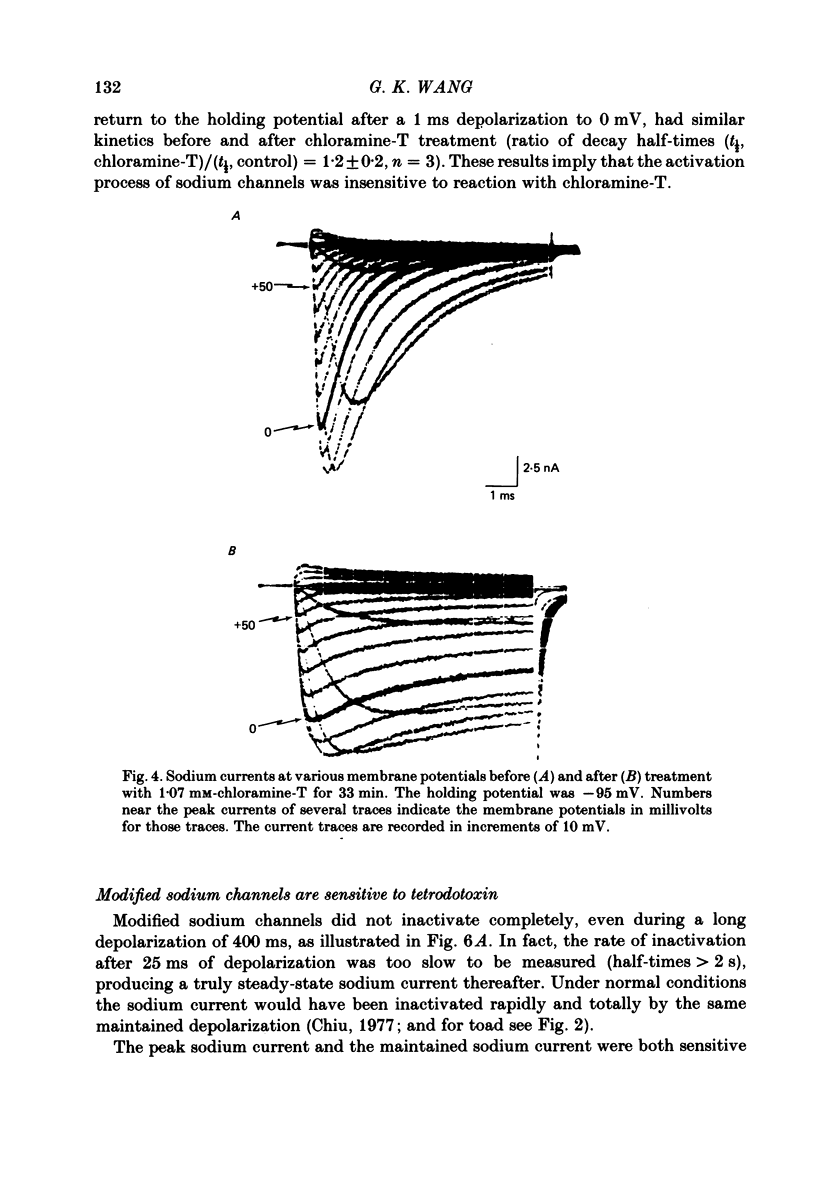
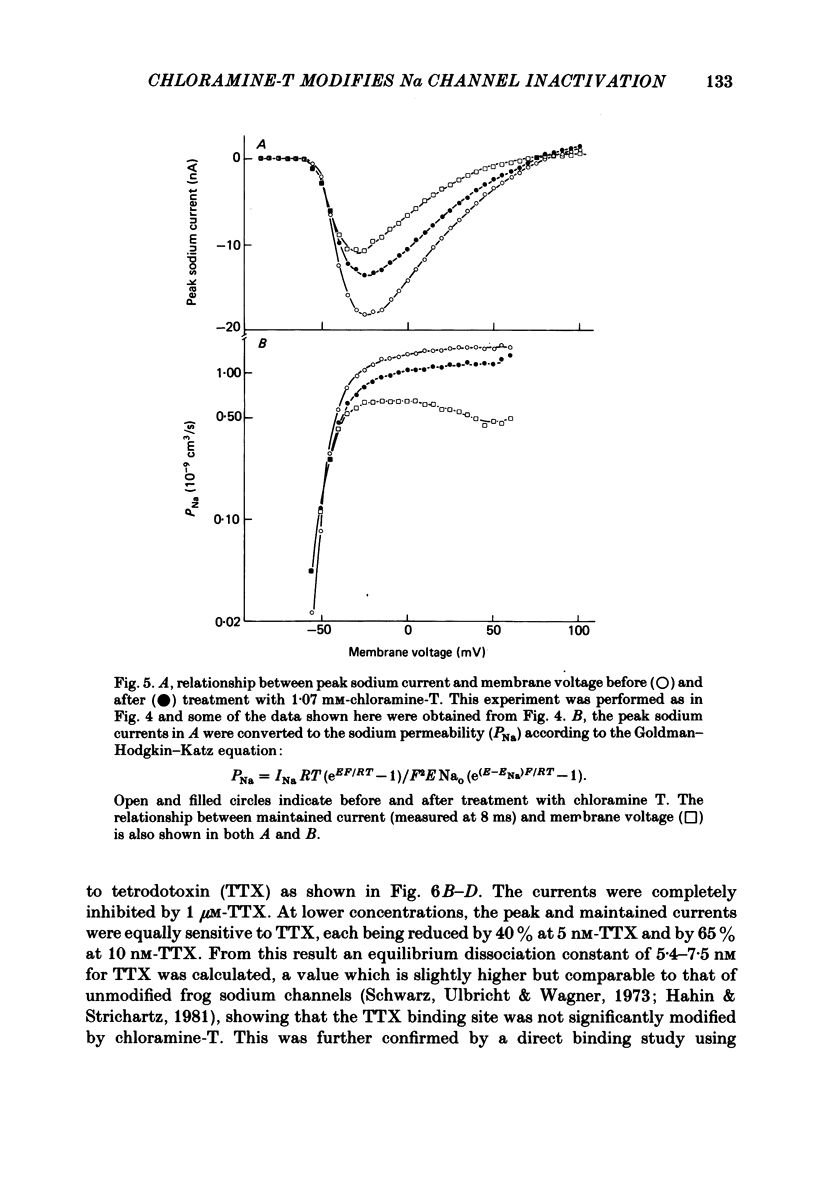
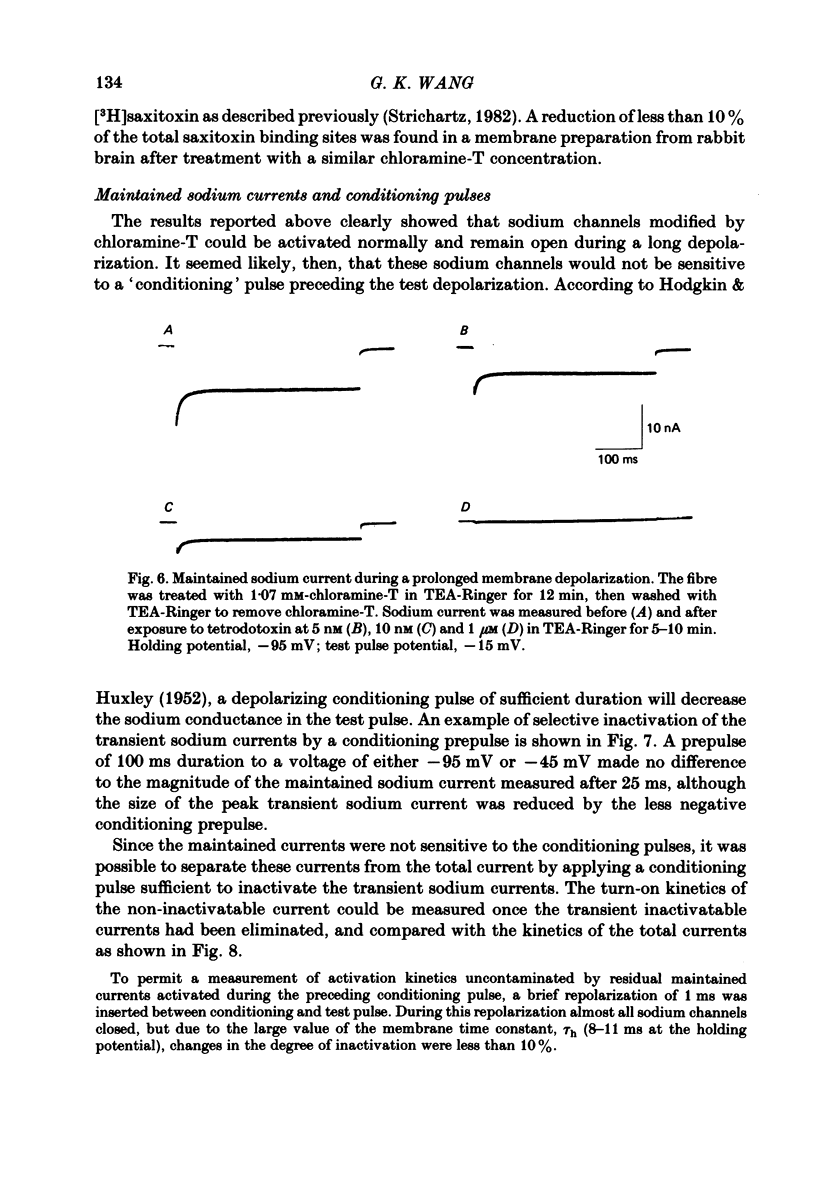
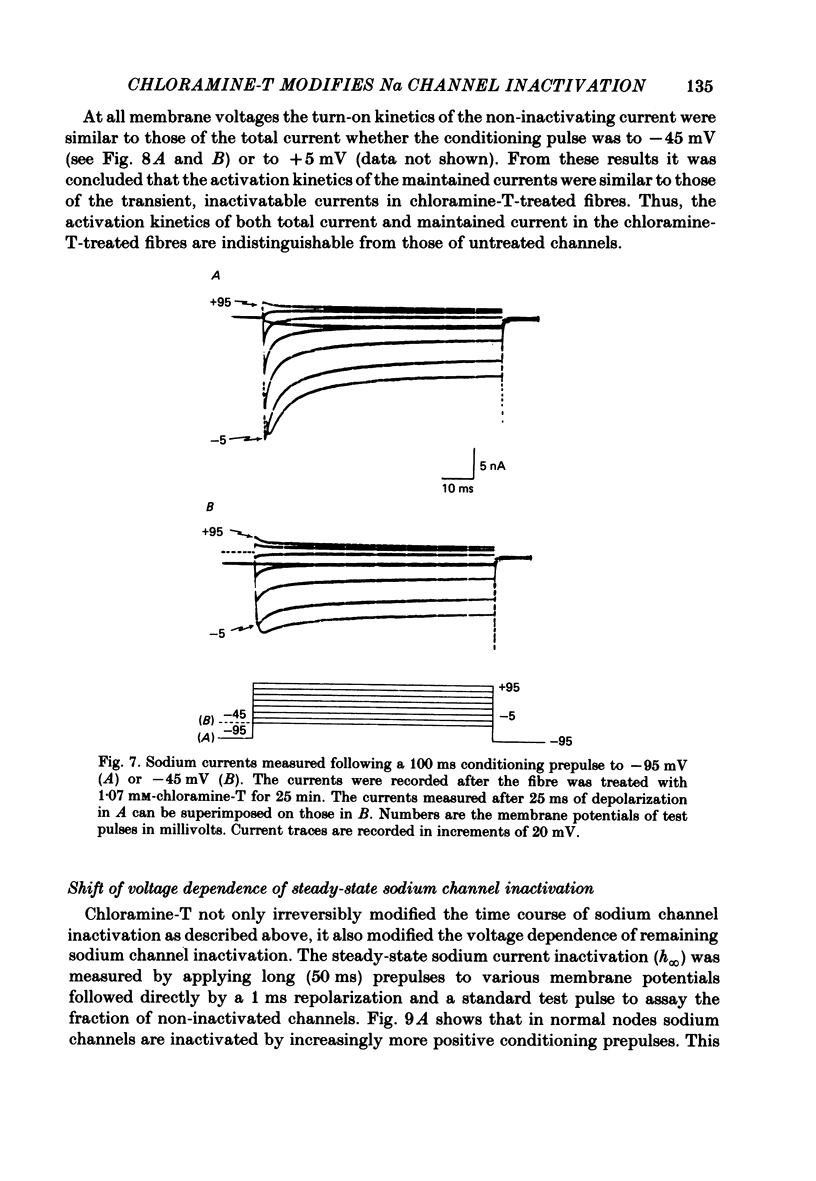
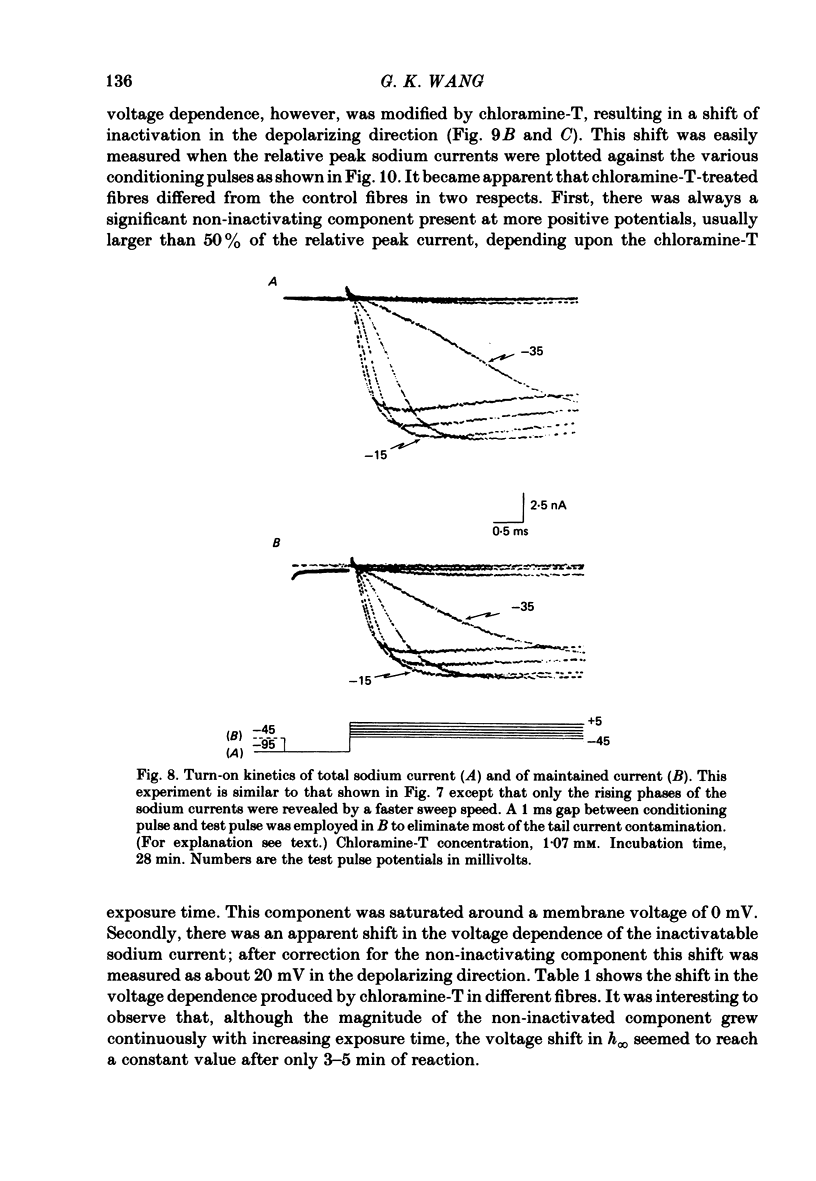
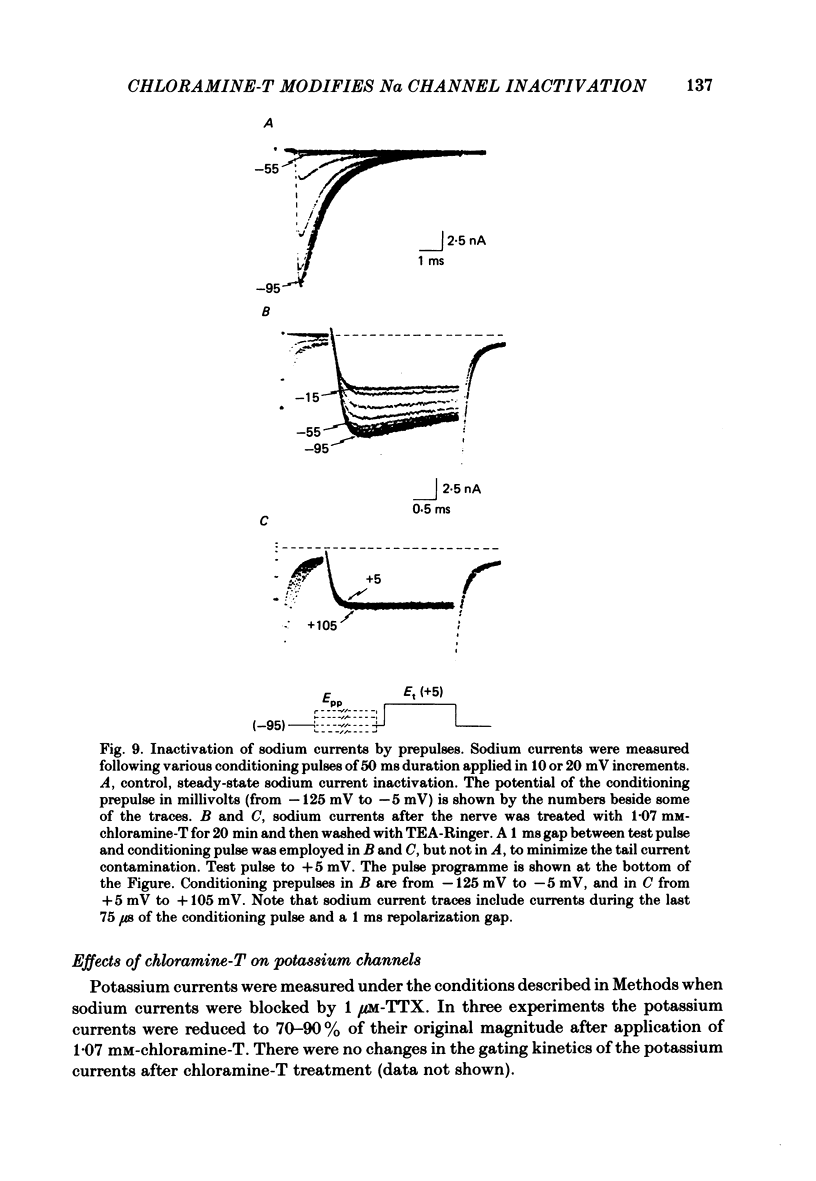
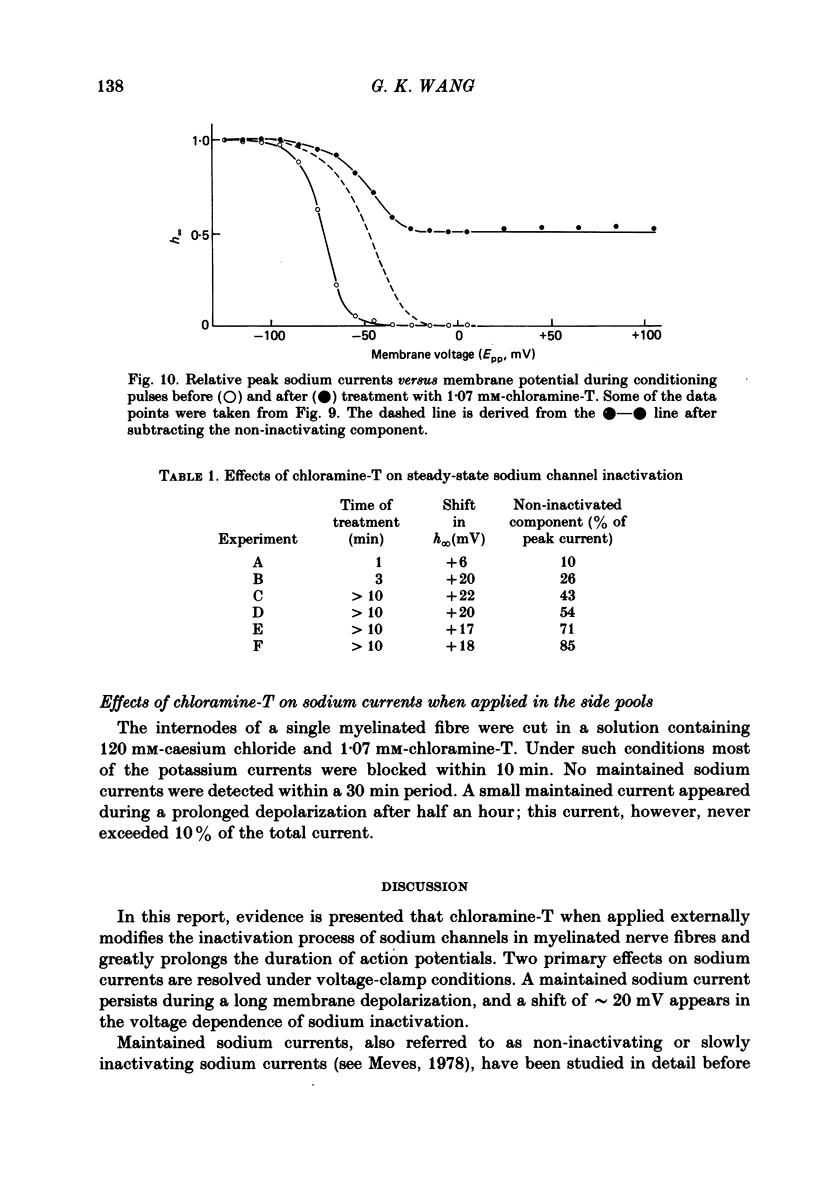
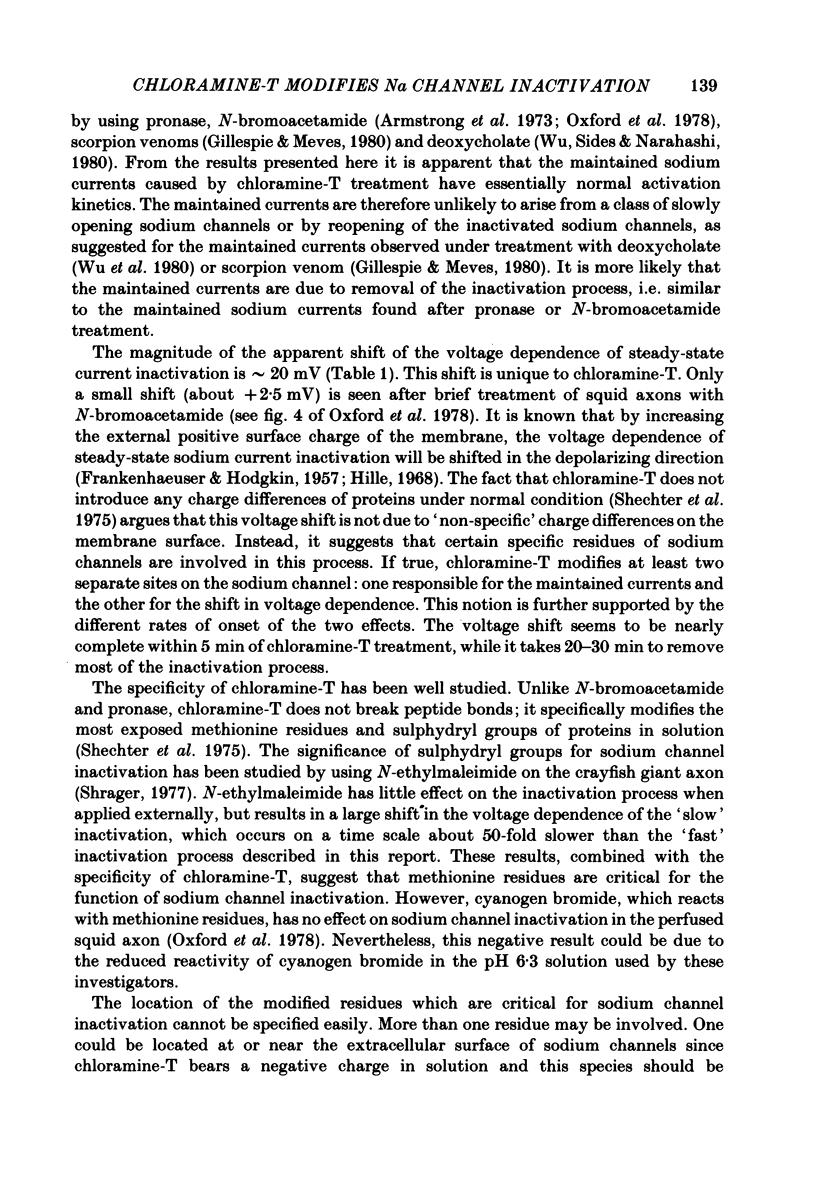
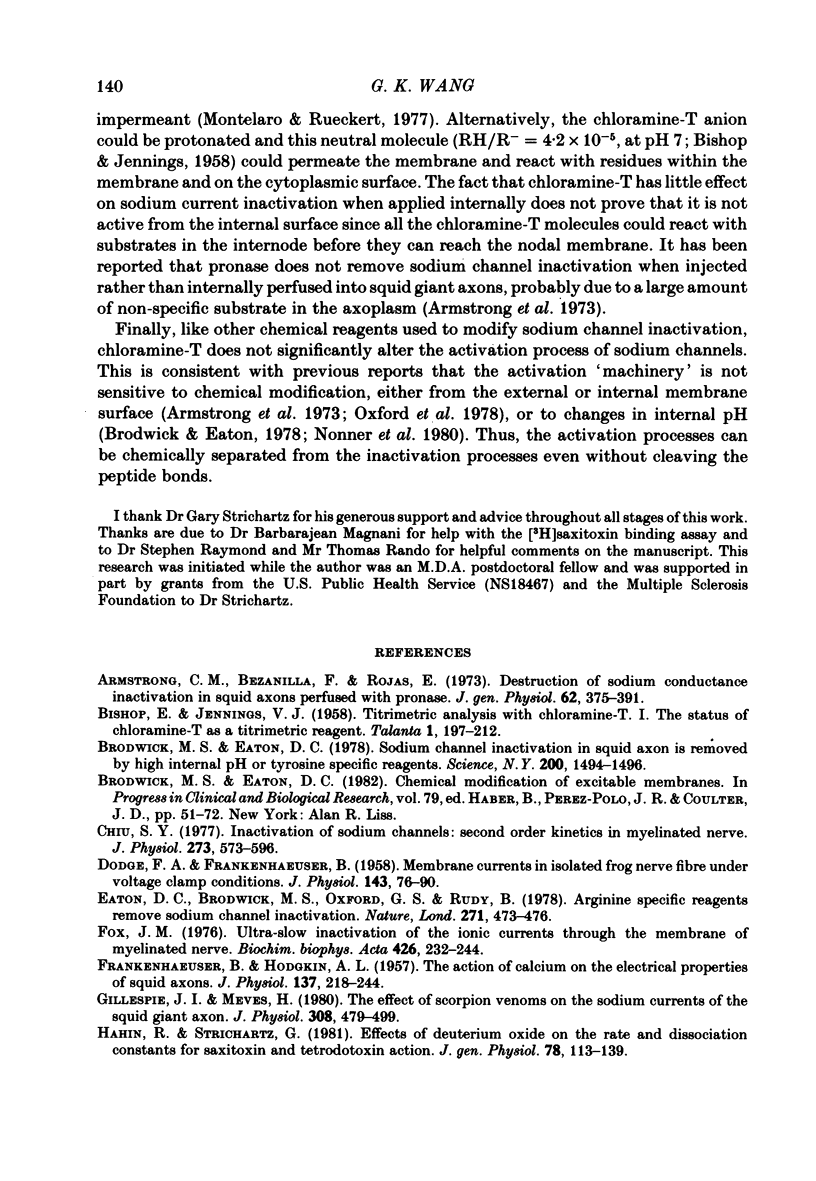
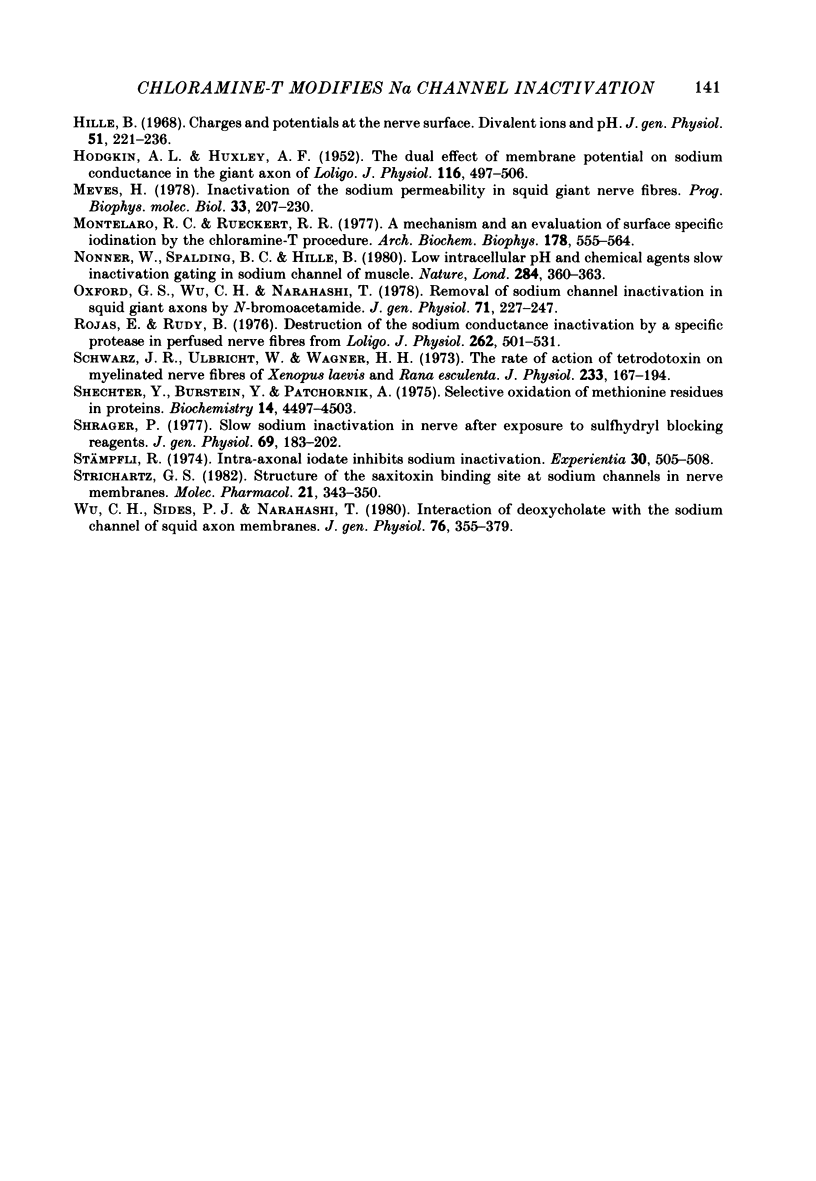
Selected References
These references are in PubMed. This may not be the complete list of references from this article.
- Armstrong C. M., Bezanilla F., Rojas E. Destruction of sodium conductance inactivation in squid axons perfused with pronase. J Gen Physiol. 1973 Oct;62(4):375–391. doi: 10.1085/jgp.62.4.375. [DOI] [PMC free article] [PubMed] [Google Scholar]
- Brodwick M. S., Eaton D. C. Sodium channel inactivation in squid axon is removed by high internal pH or tyrosine-specific reagents. Science. 1978 Jun 30;200(4349):1494–1496. doi: 10.1126/science.26973. [DOI] [PubMed] [Google Scholar]
- Chiu S. Y. Inactivation of sodium channels: second order kinetics in myelinated nerve. J Physiol. 1977 Dec;273(3):573–596. doi: 10.1113/jphysiol.1977.sp012111. [DOI] [PMC free article] [PubMed] [Google Scholar]
- DODGE F. A., FRANKENHAEUSER B. Membrane currents in isolated frog nerve fibre under voltage clamp conditions. J Physiol. 1958 Aug 29;143(1):76–90. doi: 10.1113/jphysiol.1958.sp006045. [DOI] [PMC free article] [PubMed] [Google Scholar]
- Eaton D. C., Brodwick M. S., Oxford G. S., Rudy B. Arginine-specific reagents remove sodium channel inactivation. Nature. 1978 Feb 2;271(5644):473–476. doi: 10.1038/271473a0. [DOI] [PubMed] [Google Scholar]
- FRANKENHAEUSER B., HODGKIN A. L. The action of calcium on the electrical properties of squid axons. J Physiol. 1957 Jul 11;137(2):218–244. doi: 10.1113/jphysiol.1957.sp005808. [DOI] [PMC free article] [PubMed] [Google Scholar]
- Fox J. M. Ultra-slow inactivation of the ionic currents through the membrane of myelinated nerve. Biochim Biophys Acta. 1976 Mar 5;426(2):232–244. doi: 10.1016/0005-2736(76)90334-5. [DOI] [PubMed] [Google Scholar]
- Gillespie J. I., Meves H. The effect of scorpion venoms on the sodium currents of the squid giant axon. J Physiol. 1980 Nov;308:479–499. doi: 10.1113/jphysiol.1980.sp013484. [DOI] [PMC free article] [PubMed] [Google Scholar]
- HODGKIN A. L., HUXLEY A. F. The dual effect of membrane potential on sodium conductance in the giant axon of Loligo. J Physiol. 1952 Apr;116(4):497–506. doi: 10.1113/jphysiol.1952.sp004719. [DOI] [PMC free article] [PubMed] [Google Scholar]
- Hahin R., Strichartz G. Effects of deuterium oxide on the rate and dissociation constants for saxitoxin and tetrodotoxin action. Voltage-clamp studies on frog myelinated nerve. J Gen Physiol. 1981 Aug;78(2):113–139. doi: 10.1085/jgp.78.2.113. [DOI] [PMC free article] [PubMed] [Google Scholar]
- Hille B. Charges and potentials at the nerve surface. Divalent ions and pH. J Gen Physiol. 1968 Feb;51(2):221–236. doi: 10.1085/jgp.51.2.221. [DOI] [PMC free article] [PubMed] [Google Scholar]
- Meves H. Inactivation of the sodium permeability in squid giant nerve fibres. Prog Biophys Mol Biol. 1978;33(2):207–230. doi: 10.1016/0079-6107(79)90029-4. [DOI] [PubMed] [Google Scholar]
- Montelaro R. C., Rueckert R. R. A mechanism and an evaluation of surface specific iodination by the chloramine-T procedure. Arch Biochem Biophys. 1977 Jan 30;178(2):555–564. doi: 10.1016/0003-9861(77)90226-0. [DOI] [PubMed] [Google Scholar]
- Nonner W., Spalding B. C., Hille B. Low intracellular pH and chemical agents slow inactivation gating in sodium channels of muscle. Nature. 1980 Mar 27;284(5754):360–363. doi: 10.1038/284360a0. [DOI] [PubMed] [Google Scholar]
- Oxford G. S., Wu C. H., Narahashi T. Removal of sodium channel inactivation in squid giant axons by n-bromoacetamide. J Gen Physiol. 1978 Mar;71(3):227–247. doi: 10.1085/jgp.71.3.227. [DOI] [PMC free article] [PubMed] [Google Scholar]
- Rojas E., Rudy B. Destruction of the sodium conductance inactivation by a specific protease in perfused nerve fibres from Loligo. J Physiol. 1976 Nov;262(2):501–531. doi: 10.1113/jphysiol.1976.sp011608. [DOI] [PMC free article] [PubMed] [Google Scholar]
- Schwarz J. R., Ulbricht W., Wagner H. H. The rate of action of tetrodotoxin on myelinated nerve fibres of Xenopus laevis and Rana esculenta. J Physiol. 1973 Aug;233(1):167–194. doi: 10.1113/jphysiol.1973.sp010304. [DOI] [PMC free article] [PubMed] [Google Scholar]
- Shechter Y., Burstein Y., Patchornik A. Selective oxidation of methionine residues in proteins. Biochemistry. 1975 Oct 7;14(20):4497–4503. doi: 10.1021/bi00691a025. [DOI] [PubMed] [Google Scholar]
- Shrager P. Slow sodium inactivation in nerve after exposure to sulhydryl blocking reagents. J Gen Physiol. 1977 Feb;69(2):183–202. doi: 10.1085/jgp.69.2.183. [DOI] [PMC free article] [PubMed] [Google Scholar]
- Strichartz G. Structure of the saxitoxin binding site at sodium channels in nerve membranes. Exchange of tritium from bound toxin molecules. Mol Pharmacol. 1982 Mar;21(2):343–350. [PubMed] [Google Scholar]
- Stämpfli R. Intraaxonal iodate inhibits sodium inactivation. Experientia. 1974 May 15;30(5):505–508. doi: 10.1007/BF01926319. [DOI] [PubMed] [Google Scholar]
- Wu C. H., Sides P. J., Narahashi T. Interaction of deoxycholate with the sodium channel of squid axon membranes. J Gen Physiol. 1980 Sep;76(3):355–379. doi: 10.1085/jgp.76.3.355. [DOI] [PMC free article] [PubMed] [Google Scholar]


